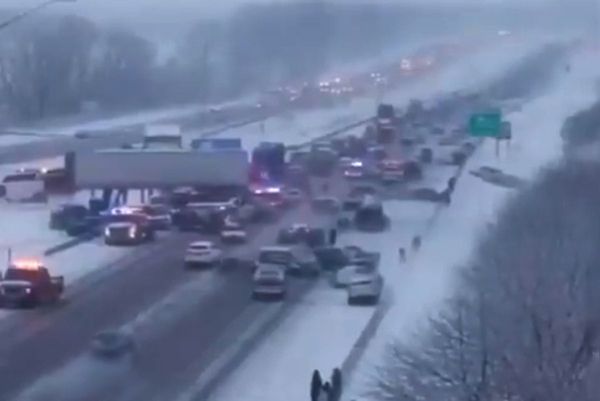
Expanding drought conditions, coupled with hot and dry weather, extreme wind and unstable atmospheric conditions, have led to explosive fire behavior in the south-western US, federal officials warned on Friday.
The warning came as a huge wildfire, currently the largest in the US, continued to burn across New Mexico on Friday, as fire crews also battled blazes in Texas and Colorado.
Randy Moore, the US Forest Service chief, cited the extreme conditions on Friday in announcing a pause on prescribed fire operations on all national forest lands while his agency conducts a 90-day review of protocols, decision-making tools and practices ahead of planned operations this fall.
Weather forecasters have issues red flag warnings, the highest alert level for wildfire danger, due intense weather conditions and the elevated risk of blazes sparking.
“Our primary goal in engaging prescribed fires and wildfires is to ensure the safety of the communities involved. Our employees who are engaging in prescribed fire operations are part of these communities across the nation,” Moore said in a statement. “The communities we serve, and our employees deserve the very best tools and science supporting them as we continue to navigate toward reducing the risk of severe wildfires in the future.”
The US Forest Service has been facing much criticism for the prescribed fire in New Mexico that escaped its containment lines in April and joined with another blaze to form what is now the largest fire in the state’s history.
Moore said that in 99.84% of cases, prescribed fires go as planned and they remain a valuable tool for reducing the threat of extreme fires by removing dead and downed trees and other fuel from overgrown forests.
Wildfires have broken out this spring earlier than usual across multiple states in the western US, where climate change and an enduring drought are fanning the frequency and intensity of forest and grassland fires. The nation is far outpacing the 10-year average for the number of square miles burned so far this year.
Nationally, more than 5,700 wildland firefighters were battling 16 uncontained large fires that had charred over a half-million acres (2,025 sq km) of dry forest and grassland, according to the National Interagency Fire Center.
The largest fire currently burning in the US has blackened more than 300,000 acres and state officials have said they expect the number of homes and other structures that have burned to rise to more than 1,000 as more assessments are done.
In Texas, the Texas A&M forestry service said the fire that has burned more than two dozen structures and forced the temporary evacuation of the historic town of Buffalo Gap was about 25% contained on Friday after charring more than 9,600 acres of juniper and mesquite brush.







